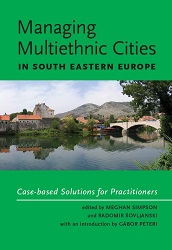Triangle of Cooperation: Tuzla, Osijek, and Novi Sad
Triangle of Cooperation: Tuzla, Osijek, and Novi Sad
Author(s): Aleksandar Popov
Subject(s): Politics / Political Sciences, Politics, Civil Society, Governance, International relations/trade, Inter-Ethnic Relations, Geopolitics
Published by: Centar za regionalizam
Keywords: Tuzla; Osijek; Novi Sad; Yugoslavia; regional cooperation; Association of Multiethnic Cities of South Eastern Europe–Philia
Summary/Abstract: The towns of Tuzla (Bosnia and Herzegovina), Osijek (Croatia), and Novi Sad (Serbia) belong to a common geographic, economic, and cultural area. As part of Yugoslavia, they enjoyed a high level of cooperation in all fields. With the collapse of Yugoslavia and the wars waged in the region, cooperation and communication among the towns ceased. Regional NGOs—the Center for Regionalism of Novi Sad, partner organizations from Tuzla, and the Center for Peace, Non-Violence, and Human Rights from Osijek—made efforts in the late 1990s and early 2000s to restore cooperation among the three towns. These efforts bore fruit, and on January 21, 2002 in Tuzla, the three mayors and directors of three NGOs from each town took part in a ceremony, signing the Agreement on Interethnic Tolerance. This agreement became the basis for the renewal of cooperation among the three municipalities. The values of the agreement were operationalized in a range of joint efforts in areas of economics and business, ecology, information and technology, sports, and education, among others. The restored cooperation among the three towns has made significant contributions to overcoming deep, postwar psychological barriers. It became a model on the basis of which new triangles or circles of cooperation of towns would later be formed, leading to the formalization of the Association of Multiethnic Cities of South Eastern Europe–Philia.
Book: Managing Multiethnic Cities in South Eastern Europe Case-based Solutions for Practitioners
- Page Range: 87-111
- Page Count: 25
- Publication Year: 2010
- Language: English
- Content File-PDF

